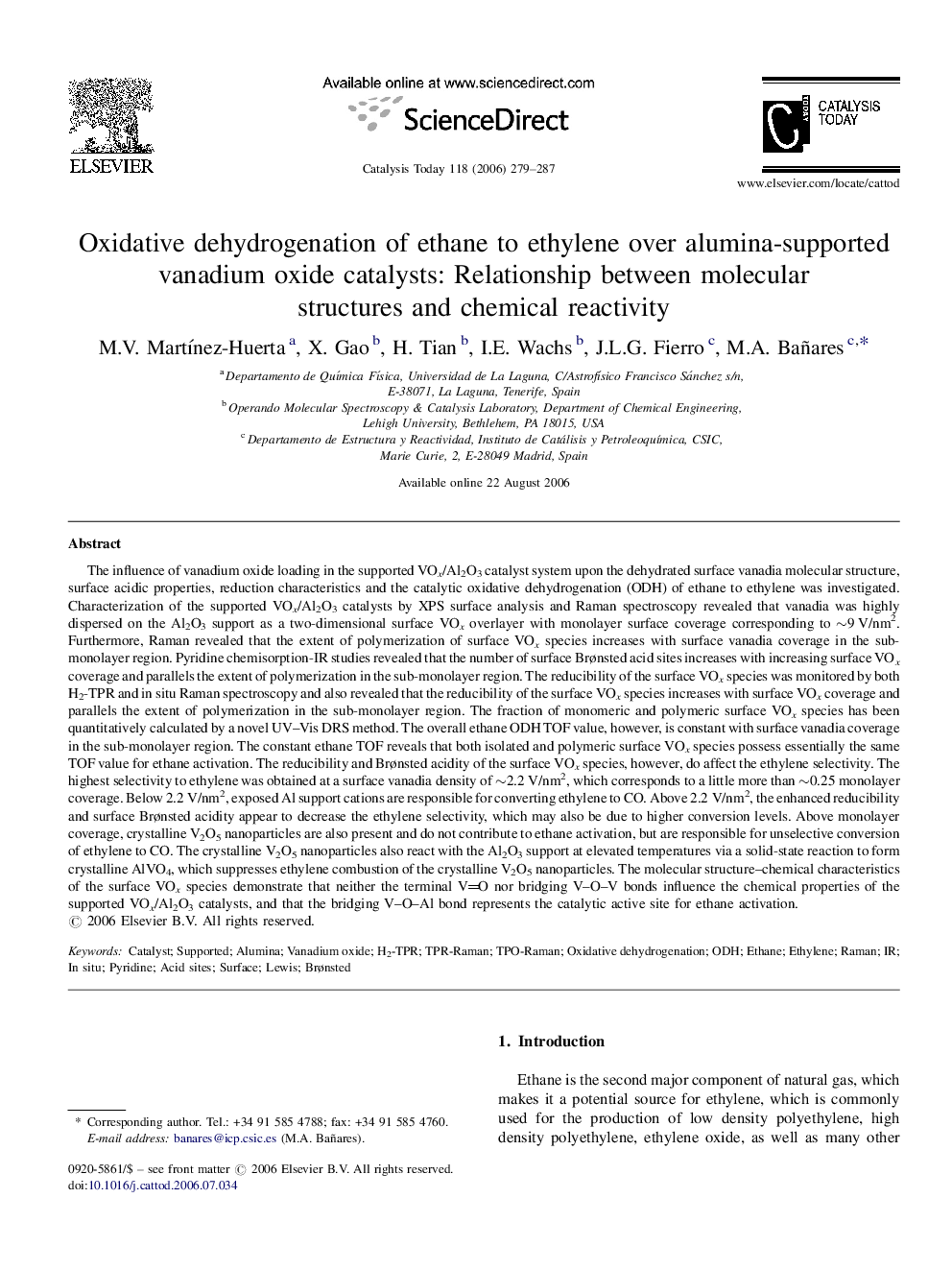| کد مقاله | کد نشریه | سال انتشار | مقاله انگلیسی | نسخه تمام متن |
|---|---|---|---|---|
| 58647 | 47161 | 2006 | 9 صفحه PDF | دانلود رایگان |

The influence of vanadium oxide loading in the supported VOx/Al2O3 catalyst system upon the dehydrated surface vanadia molecular structure, surface acidic properties, reduction characteristics and the catalytic oxidative dehydrogenation (ODH) of ethane to ethylene was investigated. Characterization of the supported VOx/Al2O3 catalysts by XPS surface analysis and Raman spectroscopy revealed that vanadia was highly dispersed on the Al2O3 support as a two-dimensional surface VOx overlayer with monolayer surface coverage corresponding to ∼9 V/nm2. Furthermore, Raman revealed that the extent of polymerization of surface VOx species increases with surface vanadia coverage in the sub-monolayer region. Pyridine chemisorption-IR studies revealed that the number of surface Brønsted acid sites increases with increasing surface VOx coverage and parallels the extent of polymerization in the sub-monolayer region. The reducibility of the surface VOx species was monitored by both H2-TPR and in situ Raman spectroscopy and also revealed that the reducibility of the surface VOx species increases with surface VOx coverage and parallels the extent of polymerization in the sub-monolayer region. The fraction of monomeric and polymeric surface VOx species has been quantitatively calculated by a novel UV–Vis DRS method. The overall ethane ODH TOF value, however, is constant with surface vanadia coverage in the sub-monolayer region. The constant ethane TOF reveals that both isolated and polymeric surface VOx species possess essentially the same TOF value for ethane activation. The reducibility and Brønsted acidity of the surface VOx species, however, do affect the ethylene selectivity. The highest selectivity to ethylene was obtained at a surface vanadia density of ∼2.2 V/nm2, which corresponds to a little more than ∼0.25 monolayer coverage. Below 2.2 V/nm2, exposed Al support cations are responsible for converting ethylene to CO. Above 2.2 V/nm2, the enhanced reducibility and surface Brønsted acidity appear to decrease the ethylene selectivity, which may also be due to higher conversion levels. Above monolayer coverage, crystalline V2O5 nanoparticles are also present and do not contribute to ethane activation, but are responsible for unselective conversion of ethylene to CO. The crystalline V2O5 nanoparticles also react with the Al2O3 support at elevated temperatures via a solid-state reaction to form crystalline AlVO4, which suppresses ethylene combustion of the crystalline V2O5 nanoparticles. The molecular structure–chemical characteristics of the surface VOx species demonstrate that neither the terminal VO nor bridging VOV bonds influence the chemical properties of the supported VOx/Al2O3 catalysts, and that the bridging VOAl bond represents the catalytic active site for ethane activation.
Journal: Catalysis Today - Volume 118, Issues 3–4, 15 December 2006, Pages 279–287